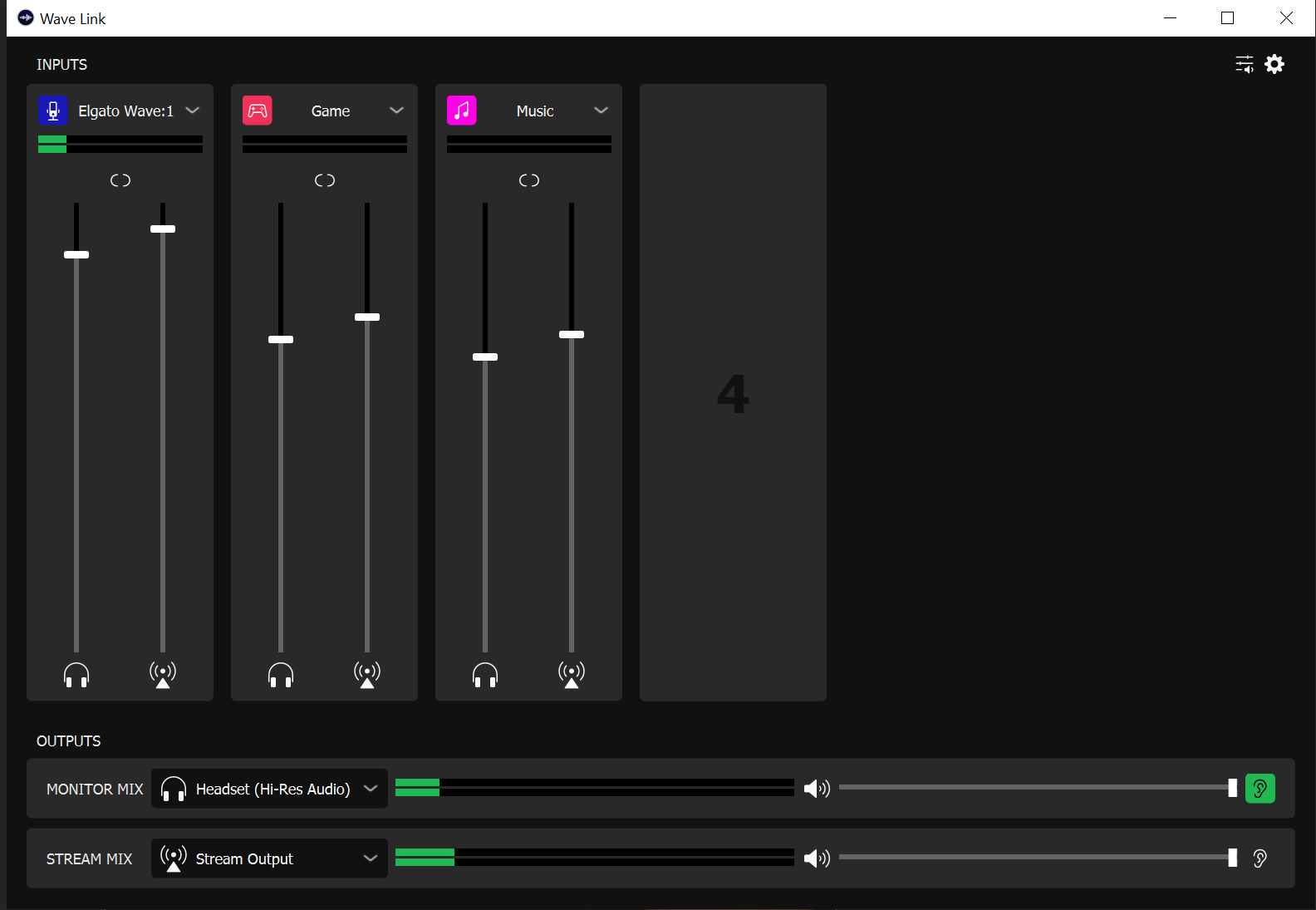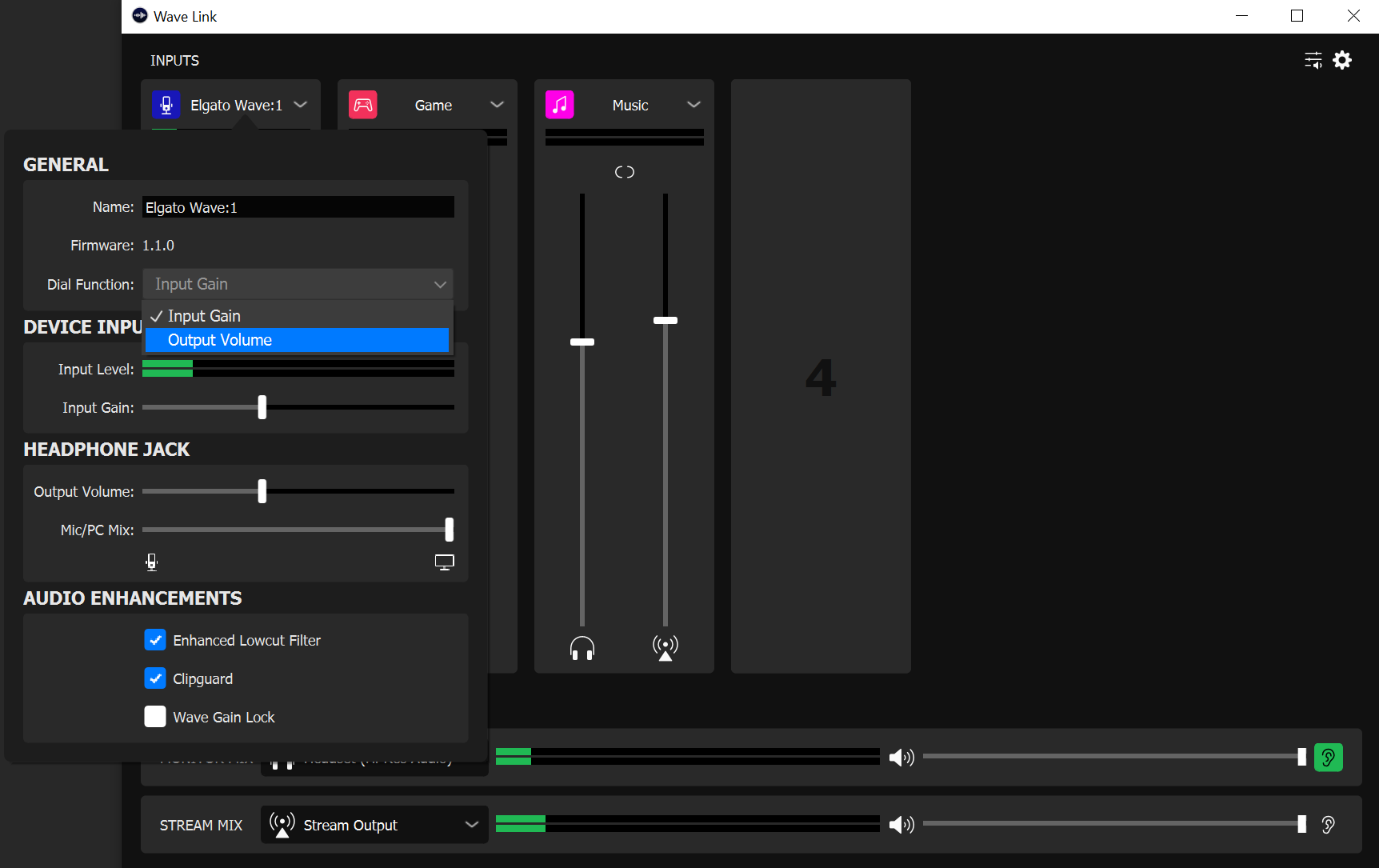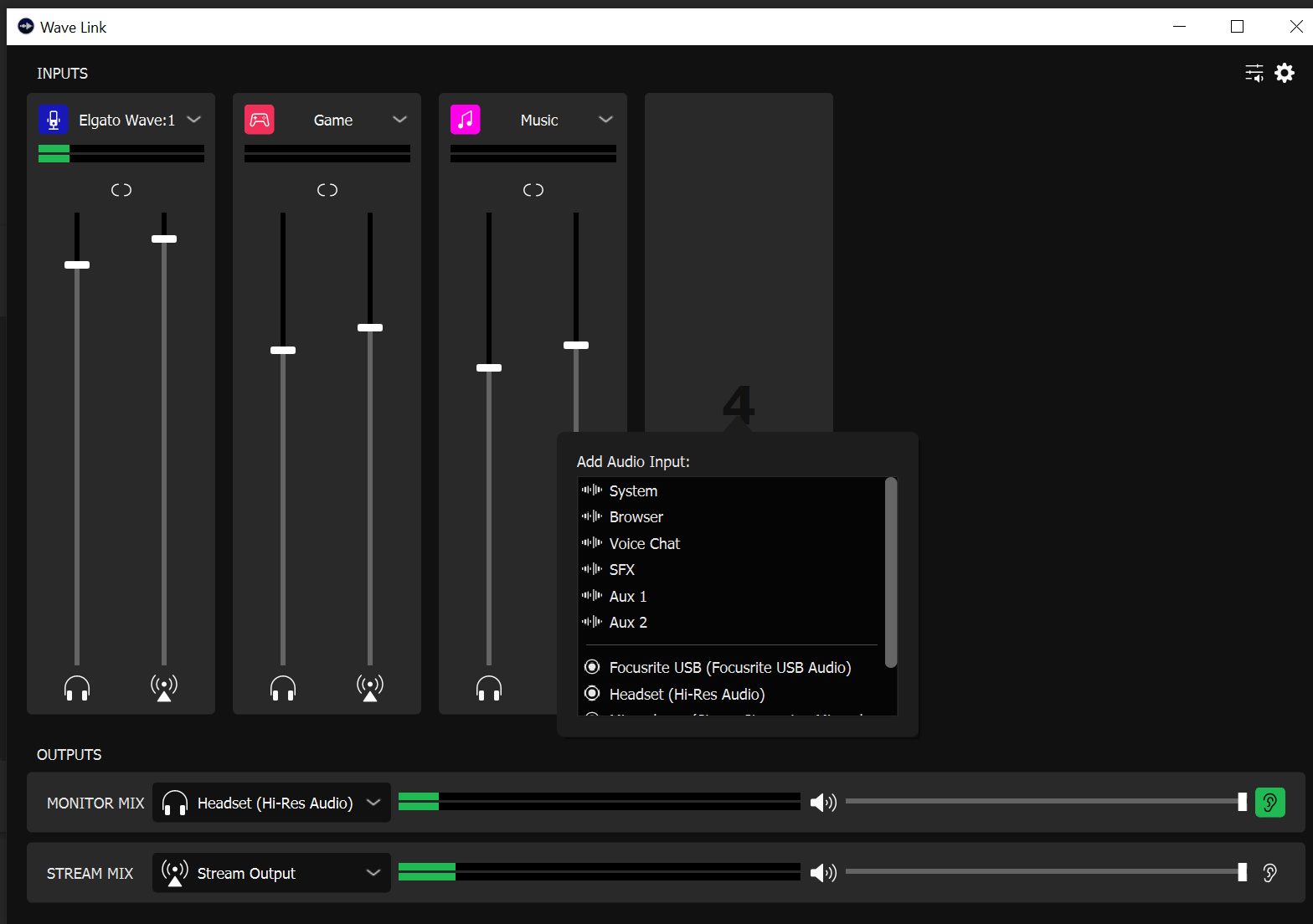Tom's Hardware Verdict
The Elgato Wave:1 is a sleek, compact condenser microphone that boasts excellent sound quality and a novel approach to audio mixing. It’s also extremely beginner-friendly.
Pros
- +
+ Excellent sound quality
- +
+ Small footprint
- +
+ Very intuitive software
Cons
- -
No noise canceling
- -
Noticeable audio latency in monitor mix unless using mic’s 3.5mm jack
- -
Very sensitive
- -
No onboard input gain controls
Why you can trust Tom's Hardware
Ease of use in a small package is the name of the game for the Elgato Wave:1 ($130 MSRP as of writing), and for the most part, it succeeds. The Wave:1, the more budget-oriented sibling of the Elgato Wave:3 ($160 MSRP), has a high-quality, Lewitt Audio-designed condenser that makes its presence felt in crisp audio reproduction. The mic opts for a cardioid pattern, making it a difficult task to make anything sound truly awful.
The Wave Link software is intuitive enough to get nearly any rank amateur mixing a broadcast like a semi-pro within minutes. All of these factors make the Wave:1 a powerful tool for beginners, who will likely be so thrilled with how easy it is to get up and running that the product's more serious flaws will be glossed over. Those with experience in professional audio or seeking the best gaming microphone however, will find the Wave:1’s issues impossible to ignore.
Elgato Wave:1 Specs
| Frequency Response Range | 70 - 20,000 Hz | Row 0 - Cell 2 |
| Sample / Bitrate | 48 kHz / 24-bit | Row 1 - Cell 2 |
| Polar Patterns | Cardioid | Row 2 - Cell 2 |
| Headphone Amplifier Impedance | 16 Ohms | Row 3 - Cell 2 |
| Dimensions (extended in stand, LxWxH) | 1.6 x 2.6 x 5.6 inches (40 x 66 x 141mm) | Row 4 - Cell 2 |
| Weight | Mic and U-mount: 0.54 pounds (245g) Base: 0.68 pounds (310g) | Row 5 - Cell 2 |
| Extra | Desktop stand, boom arm adapter, USB-C cable | Row 6 - Cell 2 |
Design of the Elgato Wave:1
The Wave:1 adheres to a simple, elegant design philosophy. The mic itself is a sleek, black, rounded rectangle featuring a USB Type-C port and a 3.5mm jack, for headphone output, on the rear of the chassis. There’s a single knob for the output volume or, if you download the mic’s software, input gain. Out of the box, the dial also doubles as a mute button mounted to the front. The volume knob is notched, providing a good tactile indicator of where your volume levels are set. Further, a white LED ring around the knob brightens as volume grows. Depressing the knob mutes the microphone and also causes the LED level indicator to turn red. Already we’re enjoying an intuitive design that’s easy to get used to.
While the overall simplicity of the Wave:1’s design is mostly a plus, the lack of onboard controls dedicated to the mic’s input gain is a significant drawback. The volume knob on the front controls the headphone output level, so you must install Elgato’s Wave Link software to adjust the mic’s input gain. This is a big downside for those seeking a more plug-and-play experience and makes the Wave:1’s software a necessity rather than an option. A recent firmware update has made it possible to adjust the mic’s input gain via the physical volume knob, but accessing this functionality still requires the use of the Wave Link software.
Inside the Wave:1’s box are an 8.2-foot USB-C cable, U-mount, desktop stand and a boom arm adapter. The mic is easily secured to the U-mount by a pair of thumbscrews. And the boom arm adapter also makes mounting the Wave:1 to a mic arm a cinch. The boom adapter is not, however, universal. Some mic arms may require additional weight to prevent vibration. The Wave:1 doesn’t come with a shock mount, but you can buy one for an additional $40.
While fastened to it’s included desktop stand, the Wave:1 maintains a very small footprint, which is a huge plus for folks with limited desk real estate. All told, the mic measures 1.6 x 2.6 x 5.6 inches, making it slightly shorter than the Wave:3 (1..6 x 2.6 x 6 inches) and even shorter than the Razer Seiren Mini (2.2 x 3.5 x 6.4 inches).
Sound Quality on the Elgato Wave:1
The Elgato Wave:1 was designed with the help of Lewitt, a well-respected name in pro audio, and it seems that that paid off. The microphone provides stellar audio quality.
Get Tom's Hardware's best news and in-depth reviews, straight to your inbox.
The mic faithfully reproduced my voice without that compressed, nasally character that is common in more budget-friendly mics. My test recordings using OBS came out crystal-clear – in some cases, too much so. This cardioid condenser is extremely sensitive and picked up a noticeable amount of background noise. If you have a streetside bedroom or other recording area like I do, this isn’t the best fit.
You’ll also need to take special consideration when positioning the mic relative to your other gaming equipment. If your best gaming keyboard is loud and clicky, you won’t want it in close proximity to the Wave:1. Since the Wave:1’s condenser operates in a cardioid pattern only, it’s best to position the mic using a boom arm if you have noisier gaming gear.
The default input gain level for the Wave:1 is a tad on the hot side but won’t come close to clipping out the mic as the Clipguard feature. This is a hard compressor/limiter that prevents peaking, and during testing it did a very good job of keeping signal below the red line. Still, it can exacerbate the problem of unwanted ambient noise in your recording/streaming space. Lowering the gain in Elgato’s Wave:1 software proved very helpful in minimizing this issue.
I kept my Wave:1 plugged into a Thunderbolt capable USB-C port on my desktop. I generally prefer USB-C or Thunderbolt for recording purposes because of the extremely low latency. Unfortunately, the Wave:1 doesn’t seem to take advantage of this. There was noticeable round trip latency from when I spoke to when the sound was relayed to my chosen output. This can be very distracting. At times, the word I was speaking into the mic wouldn’t be reproduced by my headphones until I was halfway through speaking the next one, producing an effect similar to an echo with a slight tail. At its most tame, this latency is still noticeable, and at its worst, it appears to approach the 200 - 500ms level and is reminiscent of recording in a cave.
I tried to eliminate this by closing the software, trying a different USB-C port and even testing on my USB-C equipped gaming laptop, but the results were the same. After these efforts proved fruitless, I updated the Wave:1 to it’s latest firmware (Version 1.1.0 at the time of this writing) and that seemed to actually make the problem worse.
It’s possible to get close to zero latency monitoring with the Wave: 1 but only if you plug a set of headphones into the 3.5mm jack located on the rear of the device and set your monitor mix output to the mic’s headphone output. This runs counter to the Wave:1’s small desktop footprint because that means that in order to have a usable monitor mix, you’ll need to plug in an additional device. Depending on your setup, this can create a cable management headache, but the alternative of hearing your monitor mix through a half second of slapback echo is infinitely worse.
It’s a pity that the Wave:1 suffers this constraint because it truly is an outstanding sounding mic. However, I tend to care less about how great something sounds if I’m consistently hearing it nearly half a second later than I’m supposed to. Signal lag is a big deal for a tool meant for recording and broadcast use. Imagine recording a podcast with someone on speakerphone, and you’ll get the idea. If you don’t like using headphones with your mic, don’t ride this wave.
Features and Software on the Elgato Wave:1



Wave Link is remarkably easy to get your head around and makes it very easy to achieve a well-balanced mix that can be imported as one source into streaming software. But audio perfectionists will wish there were more sophisticated ways to manipulate the overall EQ curve. Taken for what it does offer, however, Wave Link is a great time and money saver for streamers and content creators who lack the resources and space for a physical mixing desk.
There aren’t a lot of audio tweaking options. You won’t find any EQ presets or the ability to manually alter the default voicing of the mic. Instead, you only get the ability to toggle the aforementioned Clipguard and a low cut filter on and off and manipulate sliders controlling the mic’s input gain, output volume and the mix balance between the mic and PC audio.
The software also lets you pick whether the dial on the front of the mic controls input gain or output volume and has a gain lock feature to prevent other applications from interfering with your levels.
After the initial setup, you can add channels to your overall mix, each with its own independent monitor (read: headphone) and stream output slider. This allows you to run two mixes simultaneously, one for yourself, one for your intended audience. Once you have achieved the mix balance you like between your mic input, game audio, music, voice chat and any other source you wish to add, your stream output mix can be added as a source in your streaming software of choice without the need for further tweaking.
Bottom Line
The Elgato Wave:1 does a lot of things right but has some notable flaws that keep it from gracing the upper echelon of USB gaming mics.
Let’s start with the positives: the mic audio is top tier, crisp, clean and devoid of unpleasant frequency emphasis. The mic itself is compact, lightweight and easily mounted to a boom arm. Elgato’s Wave Link software does an excellent job of making a professional sounding broadcast audio mix easy to achieve by providing a workflow that is simple, elegant and intuitive. These are wonderful pluses that others in the field would do well to emulate.
However, there’s no way to adjust the mic’s input gain without installing the Wave Link software, preventing the Wave:1 from being plug-and-play. Making things worse, the default input gain setting allows for too much pickup of ambient noise. And there audio latency when not using the 3.5mm jack. Despite being a USB-C device, the audio lag often far exceeded what
was present in USB-A mics I’ve used, such as the Blue Yeti.
The Wave:3 wins higher marks, especially if it’s on sale, thanks to greater sensitivity, more dial options and a built-in pop filter.
But if you’re on a budget, the Wave:1 offers excellent sound quality alongside a well-designed virtual mixing desk for streamers and content creators who want to keep things simple -- save for using headphones.

Nate Rand is a freelance reviewer for Tom's Hardware US, covering gaming headsets, keyboards, mice, and microphones.